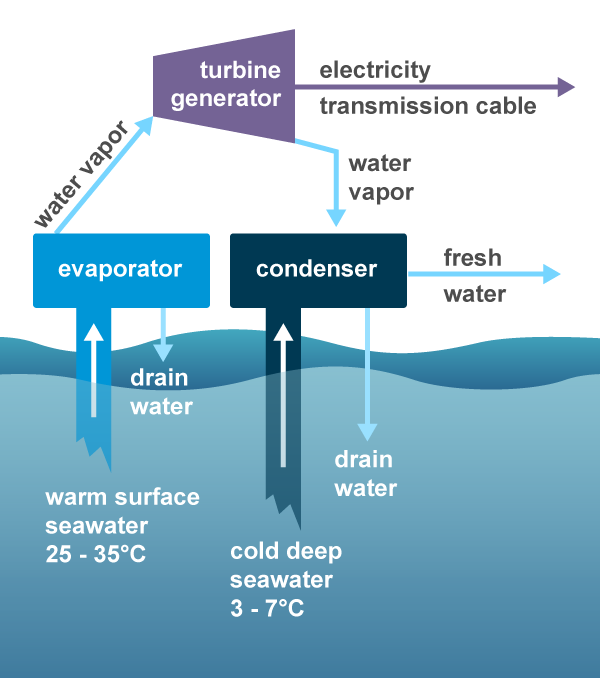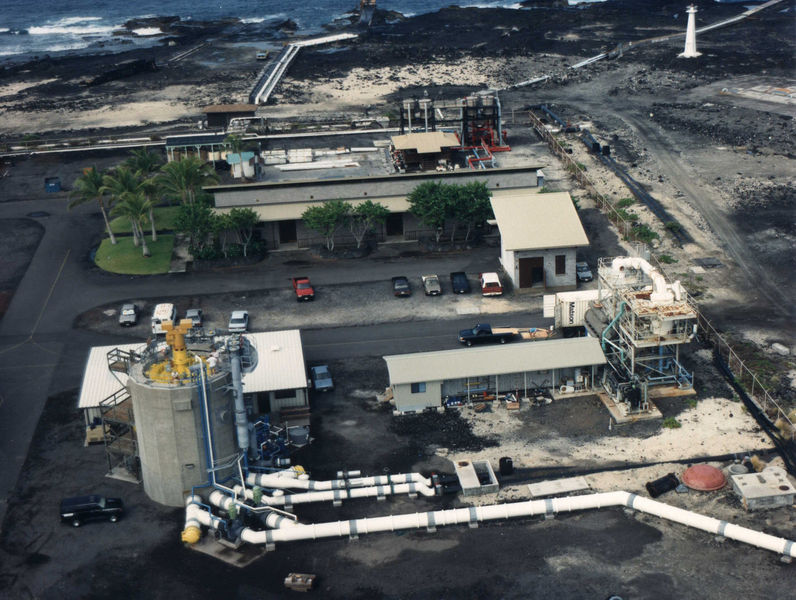Ocean thermal energy conversion produces energy from temperature differences in ocean waters
Ocean thermal energy conversion (OTEC) is a process or technology for producing energy by harnessing the temperature differences (thermal gradients) between ocean surface waters and deep ocean waters.
Energy from the sun heats the surface water of the ocean. In tropical regions, surface water can be much warmer than deep water. This temperature difference can be used to produce electricity and to desalinate ocean water. Ocean Thermal Energy Conversion (OTEC) systems use a temperature difference (of at least 20° Celsius or 36° Fahrenheit) to power a turbine to produce electricity. Warm surface water is pumped through an evaporator containing a working fluid. The vaporized fluid drives a turbine/generator. The vaporized fluid is turned back to a liquid in a condenser cooled with cold ocean water pumped from deeper in the ocean. OTEC systems using seawater as the working fluid can use the condensed water to produce desalinated water.
The United States became involved in OTEC research in 1974 with the establishment of the Natural Energy Laboratory of Hawaii Authority. The laboratory is one of the world's leading test facilities for OTEC technology. The laboratory operated a 250 kilowatt (kW) demonstration OTEC plant for six years in the 1990s. The United States Navy supported the development of a 105 kW demonstration OTEC plant at the laboratory site. This facility became operational in 2015 and supplies electricity to the local electricity grid.
Other larger OTEC systems are in development or planned in several countries, mostly to supply electricity and desalinated water for island communities.
Last updated: September 18, 2023.


